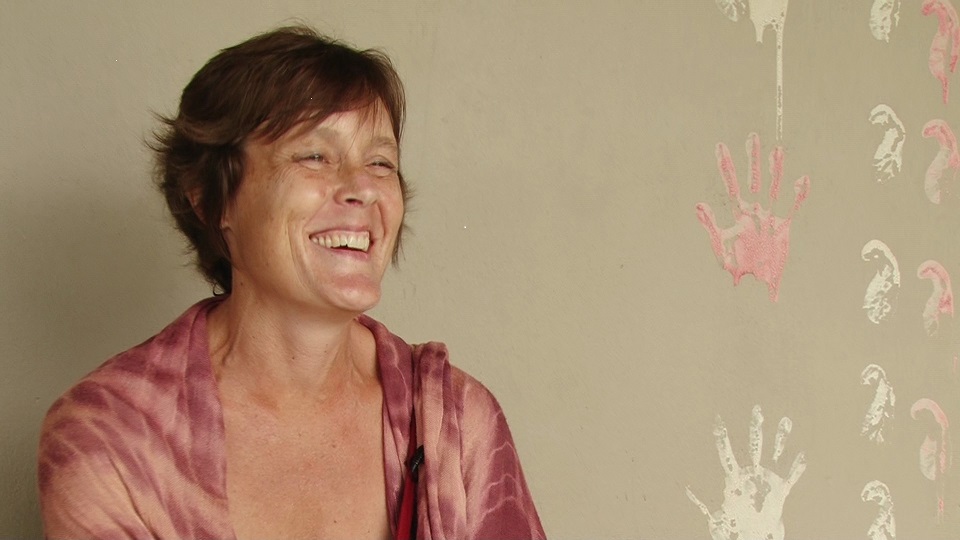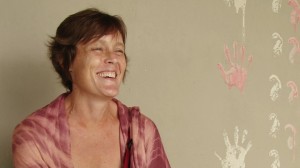“The dilemma between preserving environment and culture has been well-laid out here,” she said about Tharu Cultural Museum as we sat on the portico swatting mosquitoes buzzing undeterred against the balmy breeze that wafted in from the surrounding paddy fields. Documenting a dilemma: That is what a historical museum does in right earnest – accounting the growth, development, breakthroughs, tales of success and suppression – with integrity, for posterity. Like here. The Tharus were the original inhabitants of the region called Terai and formed 90 per cent of the population during their heydays. Today they account for less than 10 per cent and the museum faithfully records the reason for this momentous decline.
The Tharus built their house with ages-old wisdom – with walls made of cut elephant grass which was then covered with mud and cow dung. The hollow space in between the two walls kept the hut cool even when summer peaked making the tropical humidity unbearable. The museum itself had been constructed along this traditional line – both as a tribute as well for practical reasons, the Bachchali village where it is situated was sweltering in the July humidity. The original inhabitant tribe had a natural resistance to malaria which was endemic to the region allowing no new settlers to stay for long. After it was eradicated through joint international efforts, parts of Chitwan began to be cleared for cultivation leading to migration from all over Nepal and beyond into the fertile region. In 1964 Chitwan was declared a national sanctuary which in turn began a series of skirmishes between the government and the Tharus. The same year, a land resettlement commission was established to evict with force over 20,000 tribe members and even the army was called in. The reason cited was the rise in the incidence of rhino poaching for horns – hence the need to preserve the forest.“Nothing else throws so much light on the distance we collectively as the human race and individually have covered to reach where we are today – the fraught tensions, the eureka moments…all intact.” Hilary said, which also happened to be the best definition for a museum I ever heard. Yet another aspect of museums that make it more interesting, as Hilary said again is the display. “Though a primitive design by modern standards, this museum is well laid out which makes it all the more touching as well as informative.” The Tharu Museum is a perfect replication of the dilemma mentioned earlier – between conserving nature and preserving culture. “Besides filling us up on the tradition and culture of a life long gone by, the museum also serves an important purpose of telling us what we might have already lost.”
Not everybody will love all museums. While some will head straight to art museums, there is one for most inclination, the weirder the merrier. Among the ‘weird museums of the world’ listed by a travel magazine – UFO, bad art, garbage and spy museums – there is our own Sulabh International Toilet Museum, next door to where I live Dwarka in New Delhi. Much as I would love to list out the quirk of the toilet museum, that will be later. Here is a list of the top five museums of the country – a must-visit if you are in any of the cities. Remember, having a context not only helps in understanding a place and its people better but even your photographs take an added meaning.National Museum, Delhi: This museum on Janpath is the largest museum in the country with over 200,000 artefacts that cover over 1,000 years of India’s cultural heritage.
Prince of Wales Museum, Mumbai: Though re-named to a mouthful Chhatrapati Shivaji Maharaj Vastu Sangrahalaya, the museum continues to inspire awe among the serious student of Indian history.
Indian Museum, Kolkata: Billed as the ‘largest museum in India’ the Indian Museum celebrated its 200th year in February this year.
Salar Jung, Hyderabad: A personal favourite, I have spent many weekend afternoons pondering over the collections from 2nd century BC to the early 20th century.Calico Museum, Ahmedabad: A one-of-a-kind in the country, the Calico Museum houses not just textile collections over a thousand years, but other artifacts as well.
The list above keeps in mind the typical traveller – those who have hardly a day to spare in discovering context – there are many other gems of these cultural and historical nutshells. The National Gallery of Modern Art and Nehru Memorial in Delhi, Bhau Daji Lad in Mumbai and the Gandhi Smarak in Ahmedabad are some others which would further add value to your explorations.
A complex place, India: There are not too many options for a traveller into the Terai region where I was, sitting with a professional paleontologist on the steps of a tribal museum. The canoe rides where you precariously glide past languid crocodiles sunning themselves in the Rapti River, nature walks through the buffer zones of the national park, a visit to the elephant breeding centre and, that’s more or less it. While all these can be covered over the course of a single day, the place has a calming lure – the sunset by the river banks, the laidback life all around, the warm, affable people, will all hold you back. Hilary was, like me headed to India, where she had been to a number of times already. “I love it and I hate it,” she said about the country. “It’s a massive profusion of colour and sound, smell and ideas and visual beauty. The land never ceases to surprise me.”Of course Hilary also finds the many museums we have here quite handy.
















